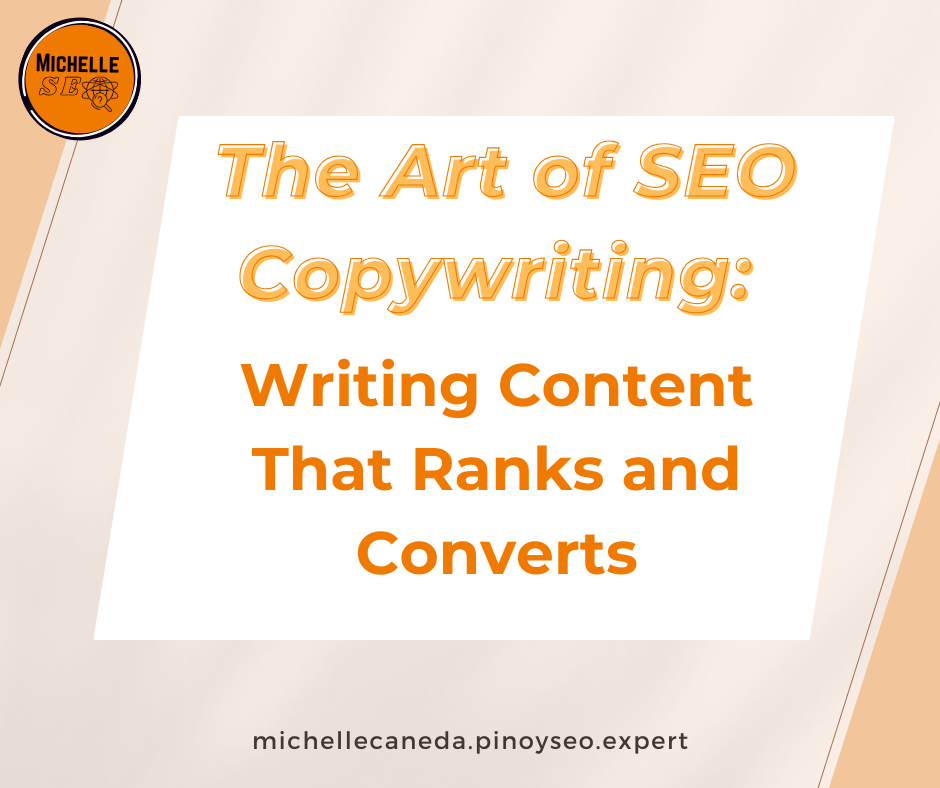If you want to write content that attracts visitors and converts them into customers, you need to master the art of SEO copywriting. SEO copywriting is the skill of creating engaging, informative, and persuasive content that ranks well on search engines and drives action. In this blog post, you will learn the essential principles and best practices of SEO copywriting, as well as some practical tips and examples to help you craft your own winning content.
What is SEO Copywriting?

SEO copywriting is the process of writing content that is optimized for both humans and search engines. It involves:
- Understanding your audience’s needs, preferences, and pain points
- Conducting keyword research to find the terms and phrases that your audience is searching for
- Writing content that matches the search intent and provides value to your audience
- Using SEO techniques such as title tags, meta descriptions, headings, internal links, and external links to help your content rank higher and get more clicks
- Incorporating persuasive elements such as headlines, subheadings, bullet points, calls to action, and testimonials to entice your audience to take action
Why is SEO Copywriting Important?
SEO copywriting is important because it helps you achieve two key goals: getting more traffic and getting more conversions.
Getting more traffic: By writing content that matches the keywords and topics that your audience is searching for, you can increase your visibility and reach on search engines. This means more people will find your website, click on your links, and visit your pages.
Getting more conversions: By writing content that provides value, solves problems, and builds trust with your audience, you can increase your engagement and retention on your website. This means more people will stay on your pages, read your content, and take action on your offers.
How to Write SEO Content That Ranks and Converts?
To write SEO content that ranks and converts, you need to follow a simple but effective framework:
1. Research: Before you start writing, you need to do some research to understand your audience, your competitors, and your keywords. You need to answer questions such as:
- Who is your target audience? What are their demographics, psychographics, and behaviors?
- What are their goals, challenges, and pain points? How can you help them achieve their goals and overcome their challenges?
- What are their search queries? What are the keywords and phrases that they use to find information, solutions, or products related to your niche?
- Who are your competitors? What are their strengths and weaknesses? How can you differentiate yourself from them?
- What are the best practices for SEO? What are the ranking factors that affect your content’s performance on search engines?
2. Plan: After you have done your research, you need to plan your content strategy and structure. You need to answer questions such as:
- What is the purpose of your content? What are the goals and objectives that you want to achieve with your content?
- What is the format of your content? What type of content are you going to create? A blog post, a landing page, a product page, an email, etc.?
- What is the topic of your content? What is the main idea or theme that you want to cover in your content?
- What is the outline of your content? How are you going to organize your content into sections, paragraphs, sentences, and words?
- What is the tone of your content? How are you going to communicate with your audience? Formal or informal? Professional or casual? Enthusiastic or calm?
3. Write: Once you have planned your content strategy and structure, you need to write your content using clear, concise, and compelling language. You need to follow these guidelines:
- Write for humans first, then for search engines. Your content should be engaging, informative, and persuasive for your audience. It should also be optimized for search engines using keywords, headings, links, etc.
- Write with search intent in mind. Your content should match the intent behind the search query. It should provide the information, solution, or product that your audience is looking for.
- Write with value in mind. Your content should provide value to your audience. It should solve their problems,

